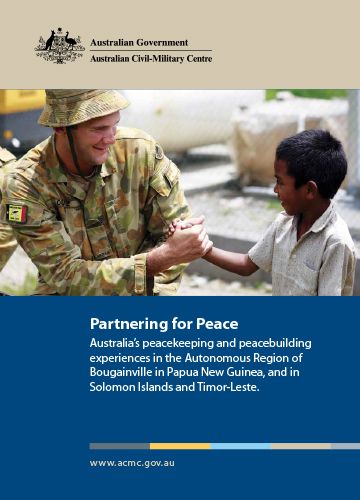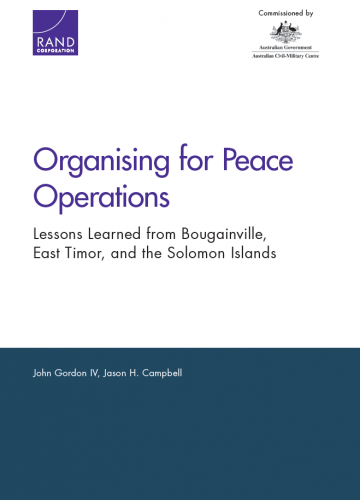Australia has a strong record of contributing to peacekeeping and peacebuilding operations. Among the first to be deployed under UN auspices, Australian troops monitored the ceasefire between Dutch and Indonesian forces in 1947. Since that time Australians have served in more than 50 United Nations and other multilateral peace and security operations around the world.
As the nature of peace operations has evolved, so too has Australia’s contribution and engagement. We remain committed to active participation—as a dependable partner—in efforts to build peace and stability in our region and globally.
This report seeks to capture the experiences, innovations and practical lessons that have emerged over the last two decades from Australia’s contributions to peace operations in support of our regional neighbours—Papua New Guinea’s Autonomous Region of Bougainville, Solomon Islands and Timor-Leste.
The analysis of peace operations in these three countries highlights the strength of partnerships between the operations and the local leadership, and underlines the core principle that in order to have a sustainable impact, peace operations must be aligned with local priorities and support local capacities.
Regional participation has been a key feature of successful peace operations in Australia’s neighbourhood, and this report draws out the significant advantages of the regional dimension to the operations in these three countries.
We are grateful for the valuable advice and guidance provided by representatives from the governments of Papua New Guinea, Solomon Islands and Timor-Leste during the preparation of this report. We are also grateful for the insights and advice received from a number of people who were part of these peace operations on the ground. We would like to acknowledge the important contributions of Australia’s regional partners to the success of the operations addressed in the report. We also acknowledge the excellent work of the Australian Civil-Military Centre in producing this report.
It is a further demonstration of the Centre’s success in strengthening national civil-military capacities to prevent, prepare for and respond to conflicts.
We hope this analysis will be a useful resource for ongoing and future peacekeeping and peacebuilding efforts within our region and beyond, and provide a practical contribution to national, regional and global dialogues on peace, security and development. We commend it to anyone working in the peacekeeping and peacebuilding domains.



